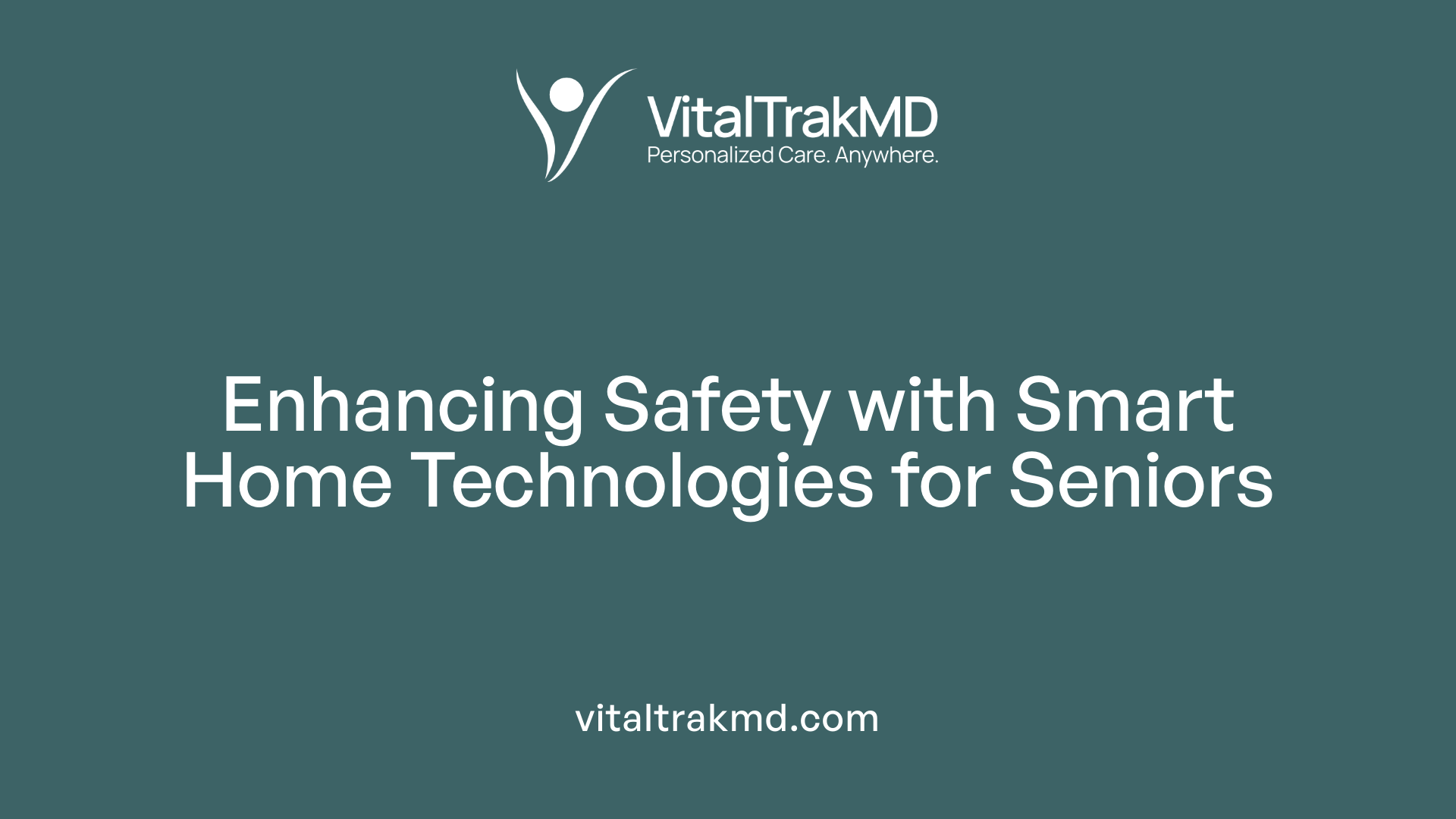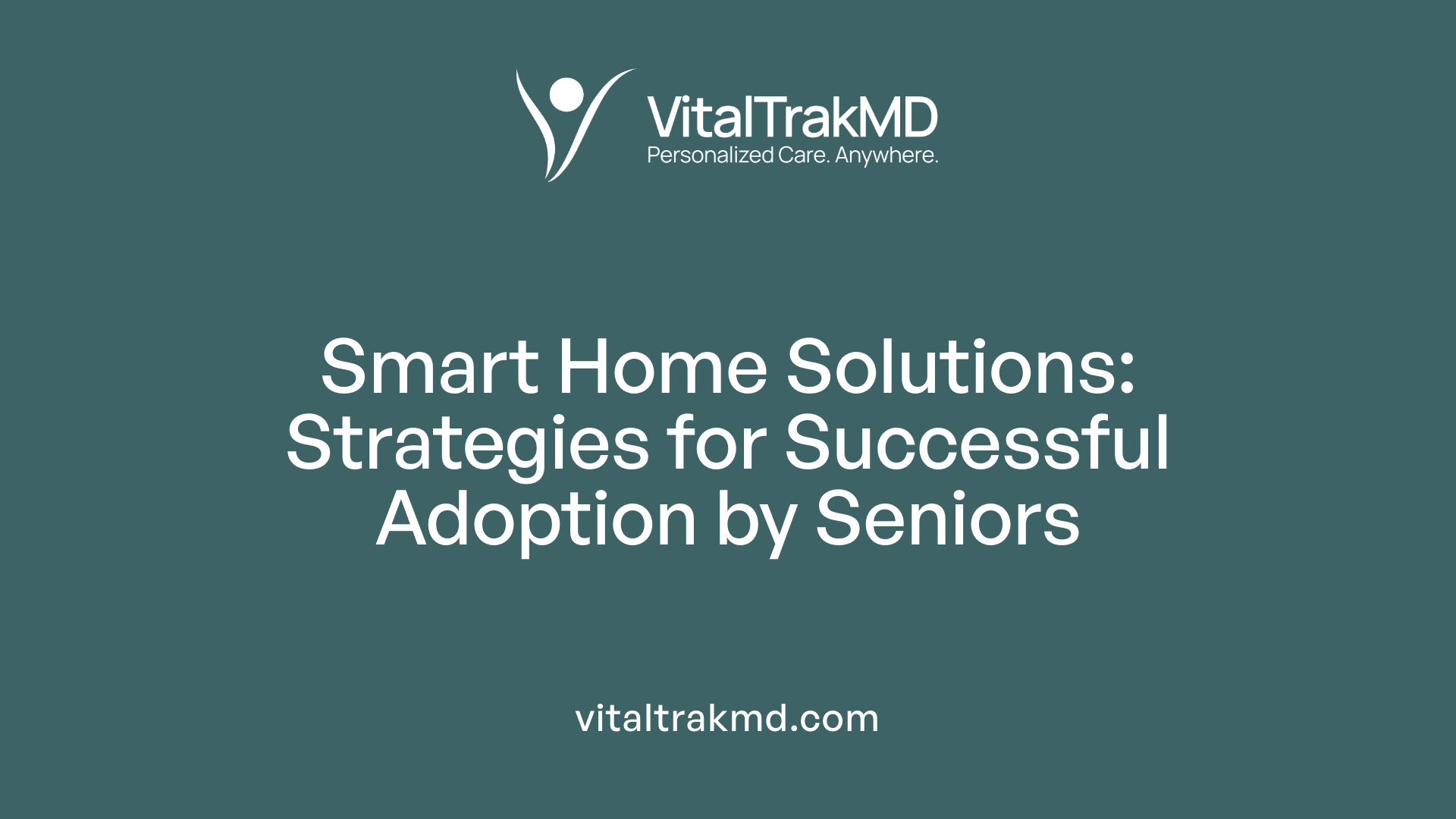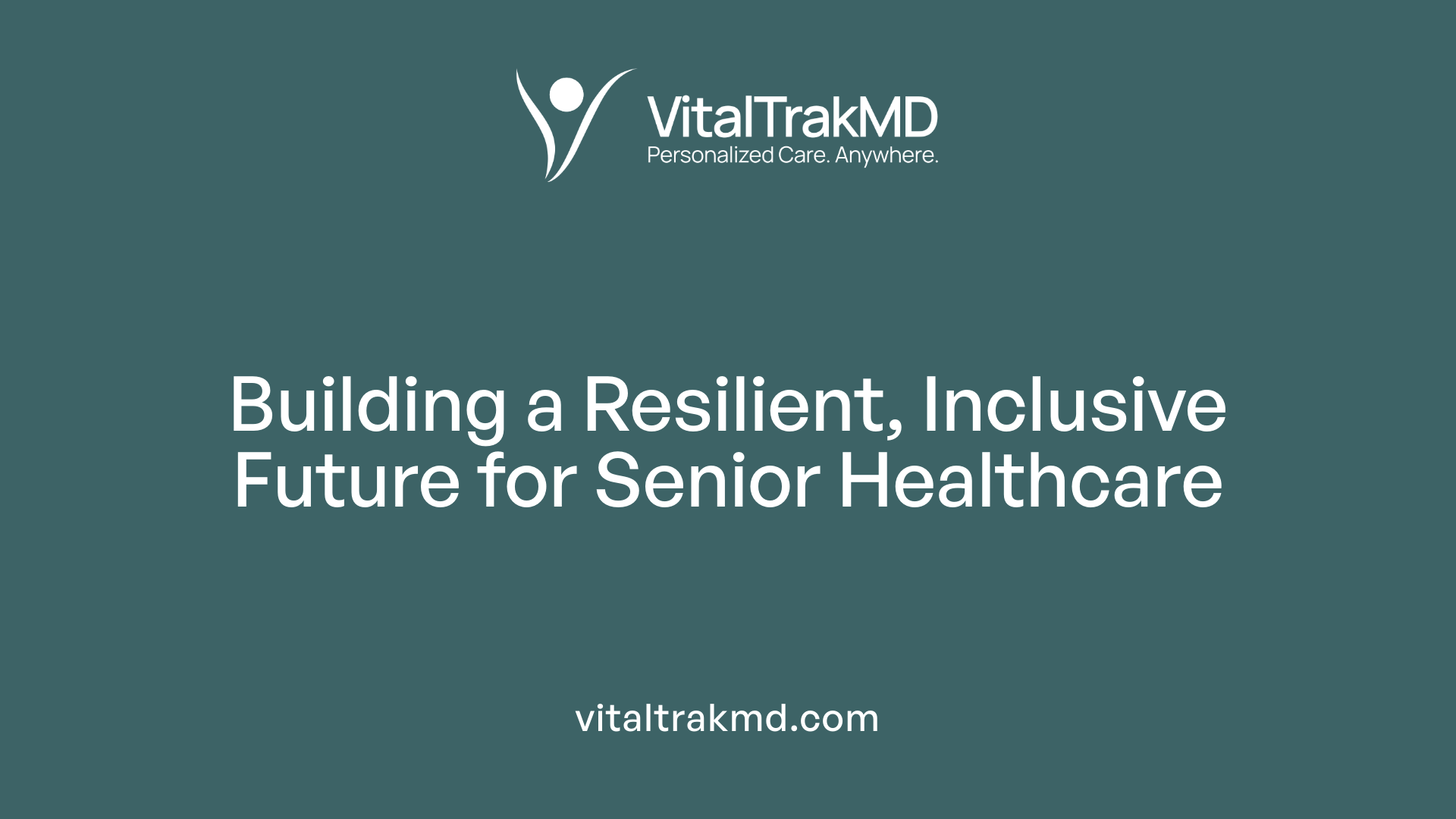How Hybrid Healthcare Strengthens Daily Wellness Habits in Seniors

Empowering Seniors Through Hybrid Healthcare
As the population ages, the need for effective, patient-centered healthcare solutions becomes increasingly vital. Hybrid healthcare models, integrating advanced digital tools with traditional care, are transforming how seniors maintain their daily wellness routines, promote aging in place, and improve overall quality of life. This article explores how these innovative approaches support seniors' independence, health, and happiness by leveraging technology, community resources, and personalized care strategies.
Understanding Hybrid Healthcare for Seniors
What is a hybrid healthcare model?
A hybrid healthcare model combines traditional in-person medical care with digital health solutions like telehealth, remote monitoring, and mobile health apps. It aims to create a flexible, accessible, and personalized healthcare experience by seamlessly integrating technology with human care. This approach allows for continuous health management, real-time monitoring, and remote consultations, making healthcare more adaptable to individual needs.
Components of hybrid healthcare
Hybrid healthcare includes several key elements that work together:
- In-person visits: Traditional face-to-face consultations with healthcare providers.
- Telemedicine: Virtual appointments conducted via video or phone.
- Remote monitoring devices: Wearables and sensors that track vital signs, activity, and sleep.
- Digital health tools: Apps and AI-driven platforms that support health tracking, medication reminders, and health coaching.
- Community and social support: Integration with local community programs and services.
How do hybrid healthcare models support seniors' daily wellness habits?
Hybrid healthcare promotes daily wellness by combining at-home digital interventions with regular in-person care. For example, remote sensors monitor vital signs and activity levels, allowing early detection of health issues. Telehealth enables seniors to check in with healthcare providers without traveling, making routine health management easier.
This model encourages consistent health routines—like medication adherence and exercise—by providing reminders and feedback through digital tools. It also helps manage chronic conditions proactively, reducing hospital visits and supporting better recovery after illness or surgery.
By removing barriers such as transportation difficulties and mobility issues, hybrid care makes participation in health-promoting activities more accessible. Engaging a combination of personal and technological support fosters healthier habits, improves management of ongoing health needs, and sustains seniors’ independence.
Benefits of hybrid healthcare for senior wellness
The integration of technology and human care offers several advantages:
- Accessibility: Overcomes transportation and mobility limitations.
- Continuous Monitoring: Tracks health data for early intervention.
- Personalization: Custom health plans based on real-time data.
- Efficiency: Reduces waiting times and unnecessary visits.
- Enhanced Engagement: Digital tools motivate seniors to stay active and involved in their health.
How does hybrid healthcare promote aging in place and daily health routines?
Hybrid healthcare supports aging in place by delivering continuous, at-home care coupled with occasional in-person visits. Telehealth sessions and remote monitoring provide ongoing support to manage health issues, reducing the risk of hospitalizations and long-term institutional care.
Community-based teams and multidisciplinary providers coordinate to address physical, cognitive, and social needs. Technologies like fall detectors, GPS trackers, and medication reminders help seniors maintain their independence safely.
This model empowers seniors to keep up with daily routines, stay socially connected, and receive tailored health interventions—all within their familiar environment. Such strategies foster safer, more confident aging at home.
Role of technology in enhancing senior wellness
Wearables and remote sensors are at the forefront of technological support. They enable real-time monitoring of vital signs, activity, sleep quality, and alertness, providing valuable health insights.
Features like fall detection, GPS tracking, and emergency alerts significantly enhance safety. These devices promote health management by encouraging physical activity and medication adherence.
Furthermore, technological tools can boost mental well-being by reducing anxiety and increasing motivation. However, successful implementation depends on addressing privacy, device usability, and ensuring equitable access.
How do digital health tools and human care fit within hybrid approaches?
Digital health tools and human care are complementary in hybrid healthcare. Digital platforms facilitate remote assessments, continuous health data collection, and administrative tasks, increasing care efficiency.
Human caregivers interpret data, provide emotional support, and customize treatment plans. They also ensure a compassionate human connection, vital for trust and engagement.
This integration allows seamless transitions between virtual and in-person care, making services more adaptive to individual preferences and needs. Combining technological innovation with personalized human touch optimizes health outcomes and enhances patient experience.
Impact of hybrid healthcare on the quality of life for seniors
By ensuring consistent, comprehensive, and personalized care, hybrid healthcare can significantly boost seniors’ quality of life. Continuous health monitoring helps prevent crises, reverse frailty, and promote physical activity.
The model also supports mental health and social engagement, reducing feelings of isolation and depression. Reducing unnecessary hospital visits minimizes healthcare costs and burdens.
Seniors experience greater satisfaction when their care respects their preferences and empowers independence. The blend of technology and human support creates a safer, more responsive environment conducive to healthier aging.
Is there evidence supporting hybrid healthcare's effectiveness?
Research indicates that hybrid care models improve health outcomes and daily wellness for seniors. For instance, programs like the KeepWell eHealth self-management tool have shown increased self-efficacy and quality of life.
Community-based, nurse-led hybrid programs have documented notable improvements in self-care confidence. These findings suggest that combining remote and in-person care sustains health, enhances engagement, and fosters independence.
How does hybrid healthcare encourage healthier daily habits?
Digital coaching tools, like AI chatbots, provide tailored feedback on nutrition, exercise, and medication adherence. These interventions motivate seniors through empathetic interactions, reminders, and real-time support.
Integrating these tools with human oversight fosters trust and creates a supportive environment for behavioral change. Successful case studies highlight improvements in diet, physical activity, and mental health, illustrating how hybrid systems empower seniors to lead healthier lives.
What community resources complement hybrid care?
Community support enhances hybrid healthcare by offering social programs, transportation, and home services. Support groups, wellness activities, and local clinics work alongside digital tools to strengthen care.
Transport assistance and home visits by healthcare or community workers help address logistical challenges. Coordination between community services and digital health ensures comprehensive coverage—addressing practical needs, social engagement, and health management.
This integrated approach fosters independence, social participation, and overall well-being, creating a supportive environment that promotes healthy aging at home.
The Role of Smart Home Technologies in Senior Care

What technology is used in smart homes to support senior health?
Smart homes employ a variety of environmental sensors such as motion detectors, contact sensors, light sensors, temperature sensors, and humidity sensors. These devices work together to monitor the behaviors and activities of older adults unobtrusively, providing continuous oversight without disrupting daily routines.
In addition to environmental sensors, smart homes support health monitoring by detecting and tracking vital signs. Devices capable of measuring blood pressure, blood glucose levels, oxygen saturation, and body temperature enable remote health management. These tools help caregivers and healthcare providers keep a close eye on seniors’ health status, allowing timely interventions.
Medication management is another critical component. Smart systems can recognize when medication boxes are opened, send reminders to take medication, and even record when doses are taken. This technology reduces the risk of missed doses and supports adherence.
Sensors and AI technologies further assist in assessing important daily activities. They analyze patterns relevant to activities of daily living (ADL) and instrumental activities of daily living (IADL), which are essential for maintaining independence. Changes in these patterns can signal early signs of functional decline, prompting necessary support.
Finally, for fall prevention and mobility monitoring, smart home systems analyze posture, motion, and activity data. These insights enable early detection of falls or mobility issues, which allows for timely assistance and reduces injury risks.
| Technology Component | Functionality | Benefits |
|---|---|---|
| Environmental Sensors | Motion, contact, light, temperature, humidity sensors | Monitor movements, environmental conditions, and home safety |
| Vital Sign Monitors | Blood pressure cuffs, glucose monitors, pulse oximeters | Support remote health surveillance |
| Medication Detection Systems | Pillbox sensors, reminder systems | Ensure medication adherence |
| Movement & Posture Sensors | Wearables, motion detectors | Detect falls, mobility issues, activity levels |
| Data Analysis & AI | Pattern recognition and anomaly detection | Early detection of health or functional issues |
How do smart home interventions influence senior safety and independence?
The integration of smart home technologies greatly enhances safety and independence for older adults. These systems provide continuous, real-time monitoring of vital signs, environmental conditions, and activities. When anomalies or emergencies such as falls are detected, immediate alerts can be sent to caregivers or emergency services, enabling rapid responses.
Moreover, smart homes facilitate ongoing health management. Features like medication reminders and environmental adjustments help seniors maintain their routines and avoid accidents. The ability to monitor mobility and activity patterns also assists in identifying early signs of health decline.
Studies indicate that these interventions lead to observable improvements in quality of life. Seniors experience increased independence and confidence, which can delay the need for institutional care. Further, by reducing the likelihood of falls and hospitalizations, smart home systems provide both safety and peace of mind.
What are the challenges linked to smart home technology for seniors?
Despite the many benefits, deploying smart home tech has its hurdles. One primary concern is device accuracy and reliability. False alarms or missed detections can undermine the system’s credibility and effectiveness.
Privacy remains a significant issue. Continuous data collection regarding individuals' movements and health status can raise concerns about data security and personal privacy, potentially hindering acceptance.
User engagement and ease of use are also critical. Seniors with cognitive or physical limitations may find it difficult to adapt to new technologies without proper training or support.
Cost and accessibility are persistent barriers. High installation and maintenance costs may exclude lower-income seniors from benefiting fully. Ensuring equitable access requires policy interventions and thoughtful system design.
Addressing these challenges involves developing user-friendly interfaces, enhancing data security, providing comprehensive user support, and promoting affordable solutions.
Summary of Smart Home Technologies for Senior Care
| Aspect | Details | Challenges |
|---|---|---|
| Environmental Monitoring | Motion, light, temperature sensors for safety | Device reliability, privacy concerns |
| Health Data Support | Vital signs, medication management | User acceptance, technology literacy |
| Safety and Fall Prevention | Posture, activity analysis for early intervention | Cost, sensor accuracy |
| Impact on Senior Well-being | Increased independence, reduced hospitalizations | Accessibility, data privacy |
Supporting Aging in Place with a Hybrid Model

What does aging in place mean for seniors?
Aging in place refers to the option for seniors to stay comfortably and safely in their own homes and communities as they grow older. It emphasizes maintaining independence, familiarity, and social connections rather than relocating to institutional settings like nursing homes or assisted living facilities.
This approach fosters a sense of control over one's life by adapting the home environment and healthcare support to meet changing needs. Seniors can continue engaging in daily routines, hobbies, and relationships, which are important for psychological wellbeing. It aligns with their preferences for autonomy and personal comfort, enabling them to age within a familiar and supportive setting.
By choosing to age in place, many seniors enjoy greater satisfaction and emotional stability, provided they have adequate support systems in place. This support often combines community resources, healthcare services, and technological tools to ensure safety, health, and social engagement.
Benefits and challenges of aging in place
Aging in place offers numerous benefits. It helps maintain independence and social connections, which can improve mental health and reduce feelings of loneliness. Familiar surroundings can also boost a senior’s sense of security and identity.
Financially, it can lower healthcare and accommodation costs compared to moving into assisted living or nursing homes. Many enjoy a higher quality of life when they retain control over their routines and environment.
However, there are challenges. Significant home modifications may be necessary to prevent falls and improve mobility. Managing health conditions becomes more complex without immediate access to medical facilities. Safety concerns, such as fall prevention and emergency response, are critical considerations.
To succeed, aging in place requires a well-planned support network, including accessible healthcare, social services, and possibly technology-based solutions. A hybrid healthcare model effectively combines these elements to help seniors live independently while ensuring safety.
How can hybrid healthcare support aging in place?
Hybrid healthcare models integrate community-based health services, remote monitoring, and telehealth to create a comprehensive support system for seniors living at home.
This approach emphasizes safety measures such as fall detection, medication reminders, and health monitoring to reduce emergency incidents and hospitalizations. It allows for early interventions, helping manage chronic conditions like hypertension, diabetes, or respiratory issues.
Multidisciplinary teams, including healthcare providers, social workers, and home care aides, coordinate to deliver personalized care. They adapt services based on each senior’s unique health status and preferences, ensuring that support is relevant and effective.
Digital health tools play a crucial role, combining monitoring systems with platforms that facilitate remote consultations and health assessments. These technologies enable seniors to receive timely care while remaining in their homes.
Community resources, such as transportation, social activities, and volunteer networks, complement healthcare services by addressing social and emotional needs. Overall, a hybrid approach creates a safer, more connected environment that promotes independence and wellbeing.
Additional insights on supporting aging in place
| Aspect | Details | Additional Information |
|---|---|---|
| Home Modifications | Installing grab bars, ramps, and non-slip flooring | Essential for mobility and fall prevention |
| Remote Monitoring | Sensors for motion, temperature, humidity, health signs | Provides real-time data to caregivers and health providers |
| Telehealth | Virtual consultations and health assessments | Reduces travel and increases timely care access |
| Community Support | Local programs, social activities, volunteer services | Combats isolation and promotes social engagement |
| Digital Health Tools | Apps and devices for medication, activity, and health tracking | Enhances self-management and emergency responsiveness |
This integrated model aims to help seniors maintain as much independence as possible while accessing necessary support to ensure safety and health.
In conclusion, aging in place with a hybrid healthcare model combines innovative technology, professional care, and community resources to provide seniors with a comprehensive, adaptable, and person-centered approach to aging at home.
Implementing Smart Home Technologies Effectively

What strategies help seniors adopt smart home technologies?
Adopting smart home solutions requires a thoughtful approach to make these technologies accessible and appealing to older adults. Tailored training sessions that address specific cognitive or physical limitations can significantly ease the transition. For instance, simplified instructions and demonstrations help users understand how to operate devices confidently. Involving caregivers and family members in the training process also provides additional support and reassurance.
Designing systems with user-friendliness in mind is crucial. Interfaces should be intuitive, with straightforward controls and clear labels. Showcasing tangible benefits such as enhanced safety, independence, and convenience motivates seniors to embrace these innovations. Building trust by transparently addressing concerns about data privacy and security is another essential component.
Implementing pilot programs allows users to experiment with technologies in a controlled setting before full adoption. Ongoing technical support and regular follow-ups help resolve issues promptly, reducing frustration. To ensure everyone can benefit, affordability and accessible options are necessary, removing financial barriers to adoption.
In summary, success in integrating smart home tech hinges on personalized training, involving support networks, straightforward interfaces, privacy assurance, and continuous assistance that collectively foster greater acceptance among older adults.
How can barriers to smart home technology adoption be overcome?
Many obstacles hinder seniors from making full use of smart home systems. Key barriers include lack of familiarity or comfort with new technologies, privacy worries, and cost concerns.
Creating easy-to-use products that seamlessly fit into daily routines can reduce frustration and resistance. Clear instructions and comprehensive ongoing support ensure users feel competent and secure in operating the devices. Addressing privacy issues transparently by explaining data collection and protection measures reassures users that their personal information is safe.
Financial considerations are significant — offering subsidies, sliding scales, or low-cost options can make smart home solutions more accessible. Collaboration among developers, healthcare providers, and community organizations helps tailor solutions to specific needs and preferences, fostering acceptance.
Raising awareness about the safety features and health benefits of these technologies can dispel misconceptions and build interest. Education campaigns and demonstrations in community centers or healthcare facilities often encourage hesitant seniors to give these systems a chance.
Ultimately, overcoming these barriers involves a combination of design simplicity, support, privacy transparency, affordability, and outreach efforts aimed at building confidence among older adults.
What are best practices for implementing user-friendly smart home systems?
Designing systems with user-friendliness at the forefront is vital for successful adoption. Simple interfaces featuring large icons, minimal clutter, and straightforward navigation help users find and operate functions easily. Customization options allow each individual to tailor the technology to their preferences, increasing comfort and usability.
Incorporating voice-activated controls and automation reduces the reliance on complex manual interactions, making the system more accessible.
Testing prototypes with older adults during development provides valuable feedback. This iterative process ensures that the final product truly meets the users’ needs, leading to continuous improvements.
Comprehensive onboarding sessions that include demonstrations and personalized training help users become familiar and confident. Providing accessible technical support, whether through phone, in-person visits, or remote assistance, ensures users can resolve issues quickly.
Finally, ensuring compatibility with existing devices and maintaining high standards for data privacy and security are fundamental for trust and seamless operation. By following these best practices, implementers can create smart home environments that genuinely support the independence and well-being of older adults.
Community Support and Hybrid Healthcare Synergy
What community support options complement hybrid healthcare?
Community support options play a vital role in enhancing the effectiveness of hybrid healthcare models aimed at supporting older adults. These include local programs such as senior centers, social clubs, and wellness initiatives that promote active engagement and social interaction.
Transportation services are essential in ensuring easy access to healthcare appointments, community activities, and grocery stores, especially for seniors who may have mobility issues. Support networks like home visitation programs, medication delivery services, and health education workshops help seniors stay engaged and informed about managing their health.
These community resources often work in tandem with digital health platforms, creating a comprehensive support system. They address practical needs, such as daily assistance and social connections, which are critical for holistic well-being.
When integrated effectively, community services not only supplement medical care but also foster a sense of belonging, safety, and independence among seniors. This synergy makes aging in place safer, more enjoyable, and sustainable, aligning with the goals of hybrid healthcare models.
How can community resources be coordinated with hybrid healthcare systems?
Coordination between community resources and hybrid healthcare systems can be streamlined through the use of centralized digital platforms. These technological solutions allow healthcare providers, community organizations, and seniors to communicate efficiently and share vital information.
Regular updates, shared health data, and coordinated care plans ensure that all parties are aligned in supporting the individual's needs. Community programs can offer valuable supplementary services such as transportation, companionship, and home environment modifications, which complement digital health monitoring and telehealth assessments.
An interdisciplinary team approach—comprising healthcare providers, social workers, and community leaders—ensures that care is holistic and tailored to each senior’s circumstances. Training staff to proficiently utilize digital systems and establishing clear protocols facilitate seamless integration.
This coordinated care structure fosters a comprehensive network that encourages autonomous living, enhances safety, and improves health outcomes for older adults. Developing these synergies not only supports individual needs but also creates resilient community ecosystems that adapt to the aging population.
| Component | Role | Details |
|---|---|---|
| Community Programs | Support and engagement | Senior centers, wellness initiatives, social groups |
| Transportation Services | Accessibility enhancement | Rides to clinics, events, shopping |
| Digital Platforms | Communication bridge | Data sharing, care coordination |
| Care Team | Holistic support | Healthcare providers, social workers, community leaders |
| Support Services | Daily life assistance | Home modifications, medication delivery, companionship |
The Impact of AI and Human Coaches on Senior Health Behaviors
What are different coaching modalities used in hybrid healthcare?
In the realm of senior health management, various coaching methods are employed to support lifestyle changes and well-being. The primary forms include digital human coaching, AI coaching, and hybrid coaching.
Digital human coaching involves real people providing interactive, personalized support tailored to seniors’ emotional and psychological needs. This method has been linked with reductions in depressive and anxiety symptoms, as well as improvements in sleep quality.
AI coaching, on the other hand, uses artificial intelligence to deliver scalable and cost-effective support. AI systems can motivate physical activity by providing personalized feedback, reminders, and emotional engagement, often leading to increases in step counts, active minutes, and energy expenditure.
Hybrid coaching combines the human element with AI support, leveraging the strengths of both. This approach offers personalized, empathetic interactions while benefiting from the reach and efficiency of AI technology. Although promising, current hybrid models require further development to maximize their health benefits.
How do AI and human coaching influence senior health outcomes?
Both coaching modalities contribute positively to the health and well-being of older adults. AI coaching has demonstrated consistent improvements in physical activity metrics, such as METs (metabolic equivalents), step counts, and active minutes, encouraging seniors to stay more physically engaged.
Human coaching significantly impacts mental health, with studies reporting reductions in depression and anxiety symptoms. Additionally, sleep quality tends to improve under human coaching interventions. Participants generally express high satisfaction, often exceeding 80%, which underscores the value of personal interactions.
Hybrid coaching models offer a promising integration, providing emotional support and motivation with scalability. Though the results are variable and under ongoing refinement, these combined approaches represent a comprehensive strategy to promote sustained behavior change.
What are the challenges and opportunities in coaching technology for seniors?
Despite the promising outcomes, implementing coaching technologies with seniors presents challenges. Establishing a strong rapport with AI systems can be difficult due to perceptions of impersonality or disconnection. Trust and privacy concerns also play significant roles, especially with sensitive health data.
Tailoring interactions to accommodate diverse cognitive abilities and varying familiarity with technology remains a hurdle. Nevertheless, these systems open new opportunities by offering scalable, accessible support that can complement traditional care modalities.
Advancements in natural language processing and personalization algorithms are set to improve the warmth, relevance, and engagement of coaching interactions. These enhanced features could bridge the emotional gap between AI and human support, fostering greater trust and longer-term engagement.
Ongoing research and iterative technological improvements promise to make coaching systems a vital part of healthy aging. By addressing current challenges, developers can create more empathetic, effective tools that support seniors’ physical, emotional, and psychological needs.
| Coaching Modality | Description | Impact | Opportunities | Challenges |
|---|---|---|---|---|
| Digital Human Coaching | Personal interactions through trained professionals | Reduces depression, anxiety; improves sleep | High emotional support | Limited scalability; higher costs |
| AI Coaching | Virtual, algorithm-driven support | Increases physical activity metrics | Cost-effective; scalable | Less emotional warmth; trust issues |
| Hybrid Coaching | Combines human support and AI | Promising health benefits | Balance of personalization and scalability | Requires optimization for best outcomes |
Understanding and integrating these coaching approaches holds significant potential for promoting healthier, more independent aging populations.
Conclusion: Shaping a Sustainable Future for Senior Care

How does hybrid healthcare shape the future of senior care?
Hybrid healthcare is fundamentally transforming the way we support seniors by blending cutting-edge digital innovations with compassionate human oversight. This model provides more adaptable and personalized health management, which is critical as the population ages.
With this approach, seniors can enjoy greater independence while still receiving essential health and support services. Continuous monitoring through sensors and remote assessments allows for immediate responses to health concerns, reducing hospitalizations and enabling early intervention.
The integration of onsite primary care, physical therapy, and home care—like the services offered at Cambridge Village—creates a comprehensive, supportive environment that champions aging in place.
As technologies such as smarter AI, more intuitive wearable devices, and integrated community platforms develop further, the effectiveness of hybrid models will increase. These systems will become more flexible, accessible, and capable of addressing complex health needs, making senior care more sustainable and inclusive.
This evolution fosters a future where seniors maintain their autonomy, their quality of life improves, and healthcare resources are used more efficiently. Hybrid healthcare thereby lays a strong foundation for a resilient, adaptable senior care system that can meet the diverse needs of aging populations.
What innovations are expected to further support seniors' wellness?
Looking ahead, the landscape of senior wellness is poised for exciting advancements. Artificial Intelligence (AI) will play an even greater role, offering predictive analytics that foresee health issues before they become urgent.
Personalized coaching—whether through digital humans, AI, or hybrid human-AI models—will become more sophisticated, providing tailored advice on physical activity, nutrition, stress management, and emotional wellbeing.
Wearable and environmental sensors will continue to evolve, becoming more accurate, less obtrusive, and capable of continuously tracking vital signs like blood pressure, oxygen saturation, and temperature.
Innovative tools such as virtual reality and gamification will actively engage seniors in physical and mental exercises, improving overall health and social participation.
Efforts to enhance data privacy and promote digital literacy will ensure that these technologies are accessible and safe for all users. Community-based technology hubs, where seniors can learn and engage, will further bridge digital divides.
These integrated innovations will empower seniors to retain their independence longer, participate actively in their communities, and receive proactive, personalized healthcare interventions. Such advancements will reinforce the potential of hybrid healthcare models to support aging populations effectively.
| Future Innovation | Expected Impact | Key Features | Supporting Technologies |
|---|---|---|---|
| Predictive Analytics | Early detection of health issues | Machine learning algorithms | Sensors, AI, big data |
| Personalized Digital Coaching | Tailored health guidance | Human, AI, hybrid coaching | Wearables, AI chatbots |
| Advanced Sensors & Wearables | Unobtrusive health monitoring | Continuous vital sign tracking | Smartwatches, environmental sensors |
| Virtual Reality & Gamification | Active engagement in health | Simulated environments for exercises | VR headsets, app platforms |
| Data Privacy & Digital Literacy | Equitable access | Secure data protocols, training programs | Digital literacy workshops |
In summary, these innovations will give seniors more tools to actively manage their health and wellbeing, ultimately fostering a healthcare environment that is proactive, personalized, and inclusive.
Driving Toward a Healthier, Independent Future
In conclusion, hybrid healthcare models are at the forefront of transforming senior wellness by seamlessly integrating digital technology with human care. This approach fosters independence, supports aging in place, and significantly enhances quality of life for older adults. As technological innovations continue to evolve, future healthcare will become even more personalized, accessible, and responsive to the diverse needs of seniors. Embracing this hybrid paradigm promises a sustainable, effective, and compassionate path forward in senior care, empowering seniors to lead healthier, more engaged lives within their communities.
References
- Can Smart Home Technologies Help Older Adults Manage ...
- Hybrid Healthcare Model – Aging in Place - Cambridge Village
- Systematic review exploring human, AI, and hybrid health ...
- What Is Hybrid Healthcare? | Tools, Benefits, and Solutions
- Designing for flexibility in hybrid care services - PubMed Central
- Benefits of a Hybrid Healthcare Model
- Introduction to using telehealth in hybrid care
- Implementation of a virtual and in-person hybrid hospital-at ...
- Artificial intelligence in healthcare: transforming the ...
Recent articles
Want to Feel Better and Live Healthier?
Join hundreds of patients taking control of their health with personalized care that fits their life – not the other way around.
Rated 4.8/5 by 32+ customers







